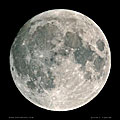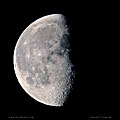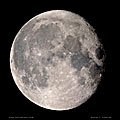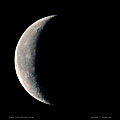Meteor Shower Calendar
The meteor shower calendar is compiled by Jürgen Rendtel
since 2016, this way continuing the 25 year series started by Alastair McBeath.
Information
in the meteor shower calendar is based on the IMO Meteor Shower Workbook, edited by Jürgen
Rendtel (IMO, 2014),
and Molau S. and Rendtel J., 2009: A comprehensive list of meteor showers obtained from 10 years
of observations with the IMO Video Meteor Network, WGN, vol. 37, pp. 98-121, as well as
additional material extracted from data analyses produced since and results of meteoroid stream
modelling provided by researchers listed in each calendar.
PDF Versions:
2026
English
2025
English |
German |
Polish
2024
English |
German
2023
English |
German
2022
English
|
German
2021
English |
German
2020
English |
German |
Chinese (中文版)
2019
English |
German |
Chinese (中文版)
2018
English |
German |
Chinese (中文版)
|
French
2017
English |
German |
Chinese (中文版)
2016
English |
German |
Dutch
2015
English |
German |
Dutch
2014
English |
German
2013
English |
Romanian
2012
English
2011
English |
Russian
2010
English |
Russian
2009
English
2008
English
2007
English
2006
English
2005
English
2004
English
2003
English
2000
English
1999
English
The heart of the Calendar is the Working List of Visual Meteor Showers, thanks to regular updating from analyses using the IMO's Visual Meteor Database, the single most accurate listing available anywhere today for naked-eye meteor observing. Even this can never be a complete list of all meteor showers, since there are many showers which cannot be properly detected visually, and some which only photographic, radar, telescopic, or video observations can separate from the background sporadic meteors, present throughout the year.
The IMO's aims are to encourage, collect, analyze, and publish combined meteor data obtained from sites all over the globe in order to further our understanding of the meteor activity detectable from the Earth's surface. Results from only a few localized places can never provide such total comprehension, and it is thanks to the efforts of the many it IMO observers worldwide since 1988 that we have been able to achieve as much as we have to date. This is not a matter for complacency, however, since it is solely by the continued support of many people across the whole world that our steps towards constructing a better and more complete picture of the near-Earth meteoroid flux can proceed. This means that all meteor workers, wherever they are and whatever methods they use to record meteors, should follow the standard IMO observing guidelines when compiling their information, and submit their data promptly to the appropriate Commission for analysis.
Visual and photographic techniques remain popular for nightly meteor coverage (weather permitting), although both suffer considerably from the presence of moonlight. Telescopic observations are much less popular, but they allow the fine detail of shower radiant structures to be derived, and they permit very low activity showers to be accurately detected. Video methods continue to be dynamically applied as in the last few years, and are starting to bear considerable fruit. These have the advantages, and disadvantages, of both photographic and telescopic observing, plus some of their own, but are increasing in importance. Radio receivers can be utilized at all times, regardless of clouds, moonlight, or daylight, and provide the only way in which 24-hour meteor observing can be accomplished for most latitudes. Together, these methods cover virtually the entire range of meteoroid sizes, from the very largest fireball-producing events (using all-sky photographic and video patrols or visual observations) through to tiny dust grains producing extremely faint telescopic or radio meteors.
However and whenever you are able to observe, we wish you all a most successful year's work and very much look forward to receiving your data.
Clear skies!











